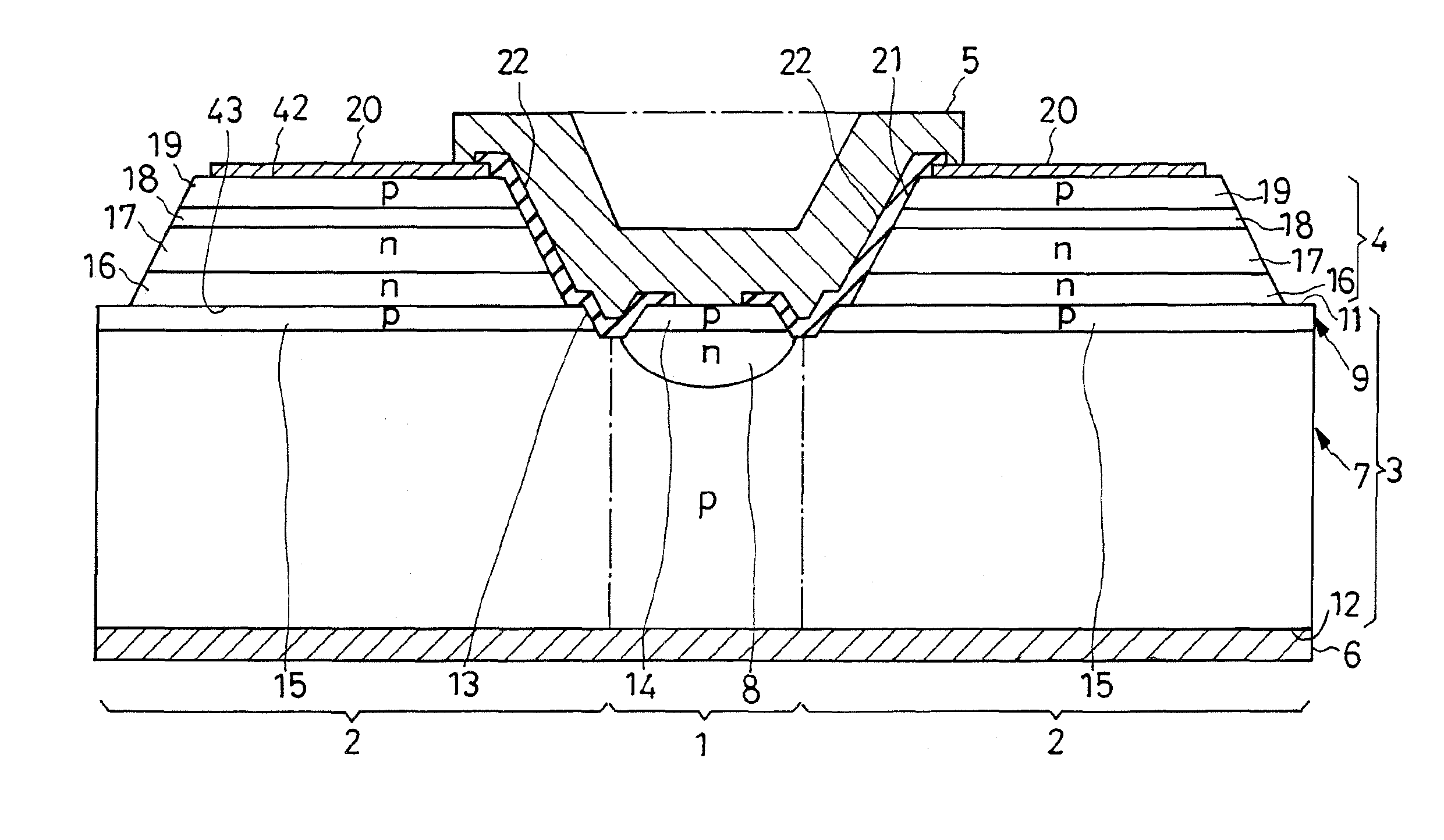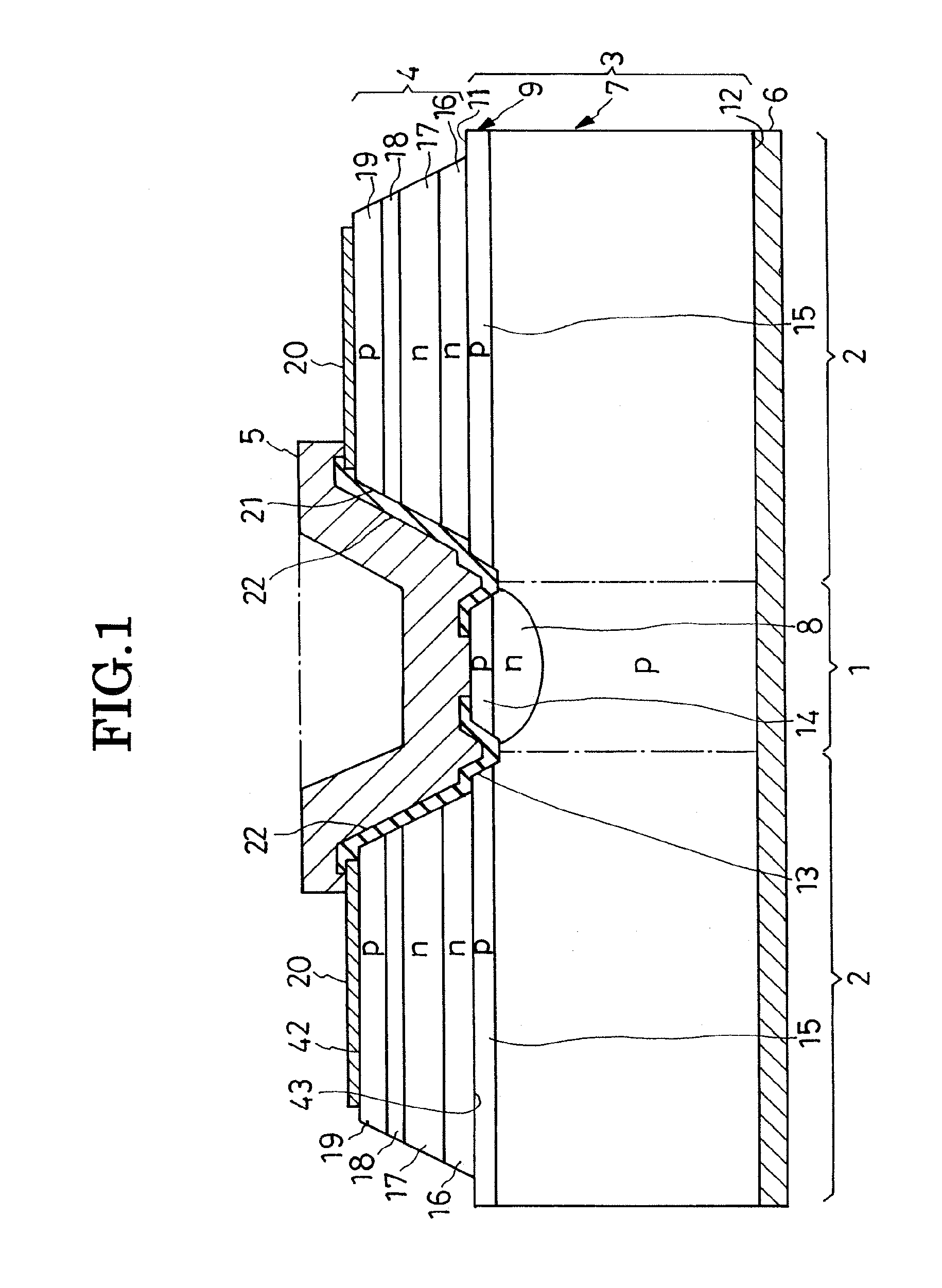Overvoltage-protected light-emitting semiconductor device, and method of fabrication
a technology of overvoltage protection and semiconductor devices, applied in semiconductor devices, semiconductor/solid-state device details, electrical apparatus, etc., can solve the problems of inability to meet the requirements of electrostatic breakdown, inability to resist electrostatic breakdown, and unsatisfactory solutions, etc., to achieve convenient and economical manufacture, improve the effect of reverse voltage, and reduce the size of the devi
- Summary
- Abstract
- Description
- Claims
- Application Information
AI Technical Summary
Benefits of technology
Problems solved by technology
Method used
Image
Examples
Embodiment Construction
[0032]The present invention is believed to be best embodied in the overvoltage-protected LED illustrated in FIG. 1 of the above drawings. The representative LED includes a silicon substrate 3 which may be notionally divided into an overvoltage protector section 1 and LED section 2. The overvoltage protector section 1, at the central part of the substrate 3, is configured to provide overvoltage protector diodes according to the invention. The LED section 2 surrounds the overvoltage protector section 1 and supports a light-generating semiconductor region 4 thereon. Deposited on the LED section 2, the light-generating semiconductor region 4 is in the form of a lamination of several constituent layers for conventionally generating light. A front or top electrode 5 and back or bottom electrode 6 are disposed opposite each other across the substrate 3 and light-generating semiconductor region 4.
[0033]The substrate 3 is mostly constituted of a region 7 of p-type silicon and additionally ha...
PUM
| Property | Measurement | Unit |
|---|---|---|
| wavelength range | aaaaa | aaaaa |
| voltage | aaaaa | aaaaa |
| reverse voltage | aaaaa | aaaaa |
Abstract
Description
Claims
Application Information
 Login to View More
Login to View More - R&D
- Intellectual Property
- Life Sciences
- Materials
- Tech Scout
- Unparalleled Data Quality
- Higher Quality Content
- 60% Fewer Hallucinations
Browse by: Latest US Patents, China's latest patents, Technical Efficacy Thesaurus, Application Domain, Technology Topic, Popular Technical Reports.
© 2025 PatSnap. All rights reserved.Legal|Privacy policy|Modern Slavery Act Transparency Statement|Sitemap|About US| Contact US: help@patsnap.com



